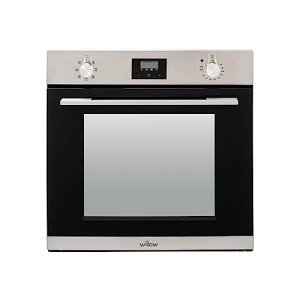Built-In Cooker And Hob: 11 Thing That You're Failing To Do
페이지 정보
본문

The Comprehensive Guide to Built-In Cookers and Hobs
Built-in cookers and hobs have actually become progressively popular in contemporary kitchens, providing both performance and aesthetic appeal. These integrated appliances, developed to fit seamlessly into kitchen cabinetry, maximize area while improving the cooking experience. This article will explore the different kinds of built-in cookers and hobs, their benefits, upkeep pointers, and often asked questions.
Understanding Built-In Cookers and Hobs
Built-in cookers typically include ovens integrated, while hobs describe the cooking surface that can incorporate different heating elements such as burner, electric coils, or induction zones. When integrated, these 2 appliances create an effective and streamlined cooking setup.
Kinds Of Built-In Cookers and Hobs
When choosing a built-in cooker and hob, it's vital to comprehend the different types offered. Here's a comprehensive table comparing the primary types:
| Type | Description | Pros | Cons |
|---|---|---|---|
| Gas Hob | Utilizes gas as a fuel source. | Quick heat change, culinary control. | Requires gas line setup. |
| Electric Hob | Uses electric coils or strong plate heating. | Generally more economical, easy to tidy. | Slower to heat and cool down. |
| Induction Hob | Uses electromagnetic energy for cooking. | Fast heating, energy-efficient, safe. | Costly, requires suitable pots and pans. |
| Built-In Oven | Can be Electric Built In Ovens, gas, or mix. | Flexible cooking options, various sizes. | Fixed place, prospective installation intricacy. |
Benefits of Built-In Cookers and Hobs
Space-Saving Design: Built-in systems conserve area by integrating perfectly into the kitchen layout, leaving more space for storage and counter tops.
Visual Appeal: They provide a streamlined and contemporary appearance, raising the design of any kitchen.
Customization: With many styles and configurations, house owners can pick appliances that best integrated ovens fit their cooking routines and kitchen measurements.
Enhanced Functionality: Built-in cookers typically include innovative features such as self-cleaning options, numerous cooking modes, and programmable timers.
Safety Features: Modern hobs integrate functions like automatic shut-off and kid locks, enhancing safety in the kitchen.
Upkeep Tips for Built-In Cookers and Hobs
To make sure the longevity and optimal efficiency of built-in cookers and hobs, proper maintenance is essential. Below are crucial upkeep suggestions:
Regular Cleaning: Wipe spills and stains immediately to prevent them from hardening or becoming harder to clean.
Use Appropriate Cleaning Supplies: Avoid abrasive products that can scratch surfaces. Use cleaner specifically developed for the type of appliance you have.
Inspect Gas and Electrical Connections: Regular assessments can avoid leakages and ensure optimal efficiency.
Calibrate Temperature Settings: If you see inconsistencies in cooking temperatures, think about recalibrating the oven.
Arrange Professional Servicing: Annual check-ups can assist identify and remedy small problems before they escalate.
Picking the Right Built-In Cooker and Hob
When selecting a built-in cooker and hob, a number of elements should be thought about:
1. Cooking Preferences:
- If you delight in quick temperature level modifications, a gas hob might be ideal.
- For energy effectiveness and uniform cooking, induction hobs are chosen.
2. Kitchen Size:
- Consider the area readily available for setup. Procedure cabinets and other appliances to make sure the selected unit fits comfortably.
3. Design and style:
- Opt for styles that match your kitchen's décor. Built-in systems come in numerous surfaces, such as stainless steel, black, or custom kitchen cabinetry.
4. Spending plan:
- Establish a budget that factors in purchase costs, setup charges, and long-term operating expenditures.
5. Brand name Reputation:
- Research reliable brands understood for dependability and customer care. Reading reviews and looking for suggestions can also be valuable.
Frequently Asked Questions (FAQs)
Q1: Are built-in cookers and hobs more expensive than conventional systems?A1: Generally, built-in cookers and hobs can be more costly upfront due to installation and design. However, they might offer long-term savings through energy effectiveness.
Q2: Can I install a built in ovens and microwaves-in cooker or hob myself?A2: While some may be installed by property owners, it is frequently suggested to employ a professional, particularly for gas or complex electrical connections, to guarantee safety and compliance with regional codes.
Q3: What is the typical life expectancy of built-in cookers and hobs?A3: With correct care, built-in cookers and hobs can last anywhere from 10 to 15 years. Regular upkeep can extend their life.
Q4: Is it possible to integrate various types of hobs with the exact same oven?A4: Yes, many cooking areas feature a combination of hobs (e.g., gas and induction) alongside a built-in oven, permitting for flexible cooking choices.
Q5: built in Oven Uk How do I understand if my hob is energy-efficient?A5: Look for energy efficiency scores and consider induction hobs, which normally use superior energy efficiency compared to gas or standard electric hobs.
Built-in cookers and hobs offer a blend of modern design and advanced cooking technology, enhancing any kitchen's functionality and design. By understanding the various types available, their advantages, and upkeep requirements, homeowners can make informed decisions when buying these essential kitchen appliances. With appropriate choice and care, built-in cookers and hobs can offer years of pleasurable cooking and a smooth kitchen experience.
댓글목록
등록된 댓글이 없습니다.
